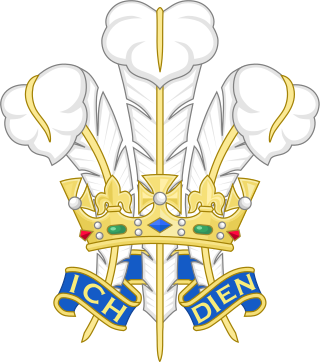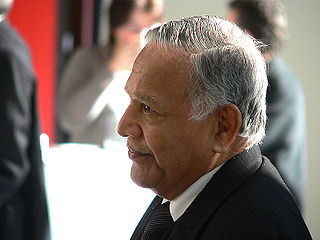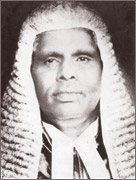Related Research Articles

A motto is a sentence or phrase expressing a belief or purpose, or the general motivation or intention of an individual, family, social group, or organisation. Mottos are usually found predominantly in written form, and may stem from long traditions of social foundations, or from significant events, such as a civil war or a revolution. One motto may be in any language, but Latin has been widely used, especially in the Western world.
In law, especially English and American common law, quo warranto is a prerogative writ requiring the person to whom it is directed to show what authority they have for exercising some right, power, or franchise they claim to hold. Quo warranto is also used, with slightly different effect, in the Philippines.

The coat of arms of the United Kingdom are the arms of dominion of the British monarch. They are both the personal arms of the monarch, currently King Charles III, and the arms of the state. In addition to the monarch, the arms are used by state institutions including the Government of the United Kingdom, the Parliament of the United Kingdom, and the British judiciary. Differenced versions of the arms are used by members of the British royal family. The monarch's official flag, the Royal Standard, is the coat of arms in flag form.

E pluribus unum – Latin for "Out of many, one" – is a traditional motto of the United States, appearing on the Great Seal along with Annuit cœptis and Novus ordo seclorum which appear on the reverse of the Great Seal; its inclusion on the seal was approved in an act of the Congress of the Confederation in 1782. The first word of E pluribus unum is actually an abbreviation of the Latin preposition ex, meaning “out of.” While its status as national motto was for many years unofficial, E pluribus unum was still considered the de facto motto of the United States from its early history. Eventually, the U.S. Congress passed an act in 1956, adopting "In God We Trust" as the official motto.

Dieu et mon droit, which means 'God and my right', is the motto of the monarch of the United Kingdom. It appears on a scroll beneath the shield of the version of the coat of arms of the United Kingdom. The motto is said to have first been used by Richard I (1157–1199) as a battle cry and presumed to be a reference to his French ancestry and the concept of the divine right of the monarch to govern. It was adopted as the royal motto of England by King Henry V (1386–1422) with the phrase "and my right" referring to his claim by descent to the French crown.
In English law, a petition of right was a remedy available to subjects to recover property from the Crown.

The Prince of Wales's feathers are the heraldic badge of the Prince of Wales, the heir to the British throne. The badge consists of three white ostrich feathers encircled by a gold coronet. A ribbon below the coronet bears the German motto Ich dien. As well as being used in royal heraldry, the feathers are sometimes used to symbolise Wales itself, particularly in Welsh rugby union and Welsh regiments of the British Army.

The Supreme Court of Sri Lanka is the highest court in Sri Lanka and the final judicial instance of record. Established in 1801 and empowered to exercise its powers subject to the provisions of the Constitution of Sri Lanka, the Supreme Court has ultimate appellate jurisdiction in constitutional matters and takes precedence over all lower courts. The Sri Lankan judicial system is a complex blend of common law and civil law. In some cases, such as those involving capital punishment, the decision may be passed on to the President of Sri Lanka for clemency petitions. The current Chief Justice of Sri Lanka is Jayantha Jayasuriya.
Sarath Nanda Silva PC served as the 41st Chief Justice of the Supreme Court of Sri Lanka.

Fīat iūstitia ruat cælum is a Latin legal phrase, meaning "Let justice be done though the heavens fall." The maxim signifies the belief that justice must be realized regardless of consequences. According to the 19th-century abolitionist politician Charles Sumner, it does not come from any classical source, though others have ascribed it to Lucius Calpurnius Piso Caesoninus. The concept is cited in Somerset v Stewart.

Christopher Gregory Weeramantry, AM was a Sri Lankan lawyer who was a Judge of the International Court of Justice (ICJ) from 1991 to 2000, serving as its vice-president from 1997 to 2000. Weeramantry was a judge of the Supreme Court of Sri Lanka from 1967 to 1972. He also served as an emeritus professor at Monash University and as the president of the International Association of Lawyers against Nuclear Arms.

Fiat iustitia, et pereat mundus is a Latin phrase, meaning "Let justice be done, though the world perish".
The chief justice of the Democratic Socialist Republic of Sri Lanka is the head of the judiciary of Sri Lanka and the Supreme Court of Sri Lanka. Established in 1801, the chief justice is one of ten Supreme Court justices; the other nine are the puisne justices of the Supreme Court of Sri Lanka. The post was created in 1801. The chief justice is nominated by the Constitutional Council, and appointed by the president. The first chief justice was Codrington Edmund Carrington. The 47th and current chief justice is Jayantha Jayasuriya.

Lady Justice is an allegorical personification of the moral force in judicial systems. Her attributes are scales, a sword and sometimes a blindfold. She often appears as a pair with Prudentia.
An Attorney at law in Sri Lanka is the only legal practitioners authorised to represent others in all court of law in the island and are also authorised to give advice regarding any matter of law. Alternative terms include lawyer.
Saleem Marsoof, PC is a Sri Lankan judge and lawyer. He is a judge of the Supreme Court of Sri Lanka and former President of the Court of Appeal. He is also a non-resident Justice of Appeal of the Supreme Court of Fiji.

Chellappah Nagalingam, KC was a leading Ceylonese judge and lawyer. He was a Judge of the Supreme Court of Ceylon and served as acting Governor-General of Ceylon in 1954. He also served as acting Chief Justice, acting Legal Secretary and Attorney General. He was the first Ceylon Tamil to be appointed to the bench of the Supreme Court of Ceylon. He is also considered as the founder of Hindu College Colombo

Edward Frederick Noel Gratiaen, was a Ceylonese lawyer and judge. He was a former Attorney General of Ceylon and puisne judge of the Supreme Court of Ceylon.
Kankanithanthri T. Chitrasiri is a puisne justice of the Supreme Court of Sri Lanka who was appointed by President Maithripala Sirisena in 2016 to replace Justice Rohini Marasinghe. He was justice of the Court of Appeal of Sri Lanka, judge of the High Court and a magistrate.
Prasanna Sujeewa Jayawardena, PC was a Sri Lankan judge and lawyer. He was a puisne justice of the Supreme Court of Sri Lanka.
References
- ↑ Black, Henry Campbell (1995). A law dictionary containing definitions of the terms and phrases of American and English jurisprudence, ancient and modern (2nd, reprint ed.). The Lawbook Exchange. p. 404. ISBN 1-886363-10-2.
- ↑ Walker, David M (1980). The Oxford Companion to Law . Oxford: Clarendon Press. pp. 1366. ISBN 0-19-866110-X.